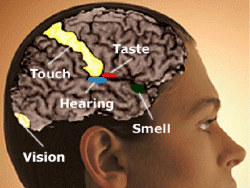|
Symbols
are extremely potent devices – without them life cannot exist. Their
wise use enhances life. Their flawed use puts life at risk and can
destroy it.

A
symbol is
something that represents something else by association, resemblance, of
convention.
A symbol is a
shared crystallized quantum of meaning.
  
All sentient
forms employ symbols at every level and in myriad ways. Every living
cell and body of cells uses symbols to survive and propagate amidst the continual
change, which is the universe(s).
The information
contained in any symbol is only an approximation or partial resemblance
of reality (the constant universal transformation) because all forms are
very transient amidst the universal flux.
The existence of
a life form is enhanced as its symbol use better reflects reality
because the organism is more able to retain vital meaning, develop
resilient structures and thrive.
The existence of
a life form is diminished as its symbol use fail to mirror reality
because vital meaning becomes corrupted, it develops increasingly
flawed structures and it dies.
This is true of
the DNA symbols of cells or the advertising symbols of corporations.
Information
is physical. Symbols exist in myriad forms using all the vibrations that
organisms are sentient of. For instance, human beings can detect
different vibrations with specialist organs such our eyes (light), ears
(sound), nose (smell) and tongue (taste) while our bodies are generally
sensitive to touch. Our sense of touch enables us to be aware of
thermal, gravitational, kinetic and other forces.

How a particular
symbol resonates in us depends on our experiences and all the millions
of associated symbols within us that form our worldview.

For instance
spoken or written use of the ‘greenhouse” symbol as in “greenhouse
gas” may evoke an overwhelming sensation determined by our experience
of a greenhouse.
We can only estimate how a symbol use resonates within
us or with our audience because our consciousness is but a trace element
of the human psyche. Thus our survival depends on continual
experimentation and evaluation of our use of symbols.
Note: All human
communication involves the use of metaphors and is about the transfer of
meaning. To dismiss, as some do, their use of a symbol as
"just a metaphor" and "mere semantics" is to deny
the power of symbols.
Etymology of symbol
The word symbol came to the English language by way of Middle
English, from Old French, from Latin,
from the Greek σύμβολον (sýmbolon)
from the root words συν- (syn-), meaning
"together," and βολή (bolē),
"a throw", having the approximate meaning of "to throw
together", literally a "co-incidence", also "sign,
ticket, or contract".
Page last updated:
July 2010
TOP
|